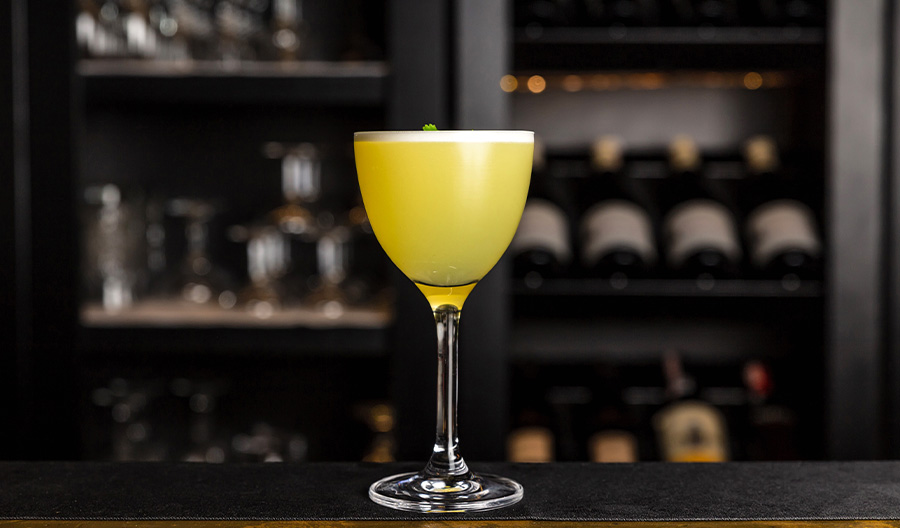When it comes to martini glassware some prefer the aesthetics of the coupe’s timeless, rounded design and how the glass feels in hand, especially when filled to the near brim with gin and vermouth.
A martini glass and a coupe are both coupes and both have a history of serving Champagne and mixed drinks.
The coupe emerged in the 1830s as a popular vessel for Champagne, just a few decades before Jerry Thomas published his 1862 Bartenders Guide. Widely recognized as one of the world’s earliest cocktail manuals, Thomas’s book instructed readers to strain drinks like The Gin Cocktail and Martinez into coupes.
The martini—a likely descendent of the Martinez, itself a Manhattan variation—came a few years later still, mentioned in newspaper articles as early as 1886 and Harry Johnson’s Bartender’s Manual in 1888. While the United States bar industry was waylaid by Prohibition, the classic V-shaped martini glass as we know it debuted in Paris at the 1925 International Exhibition of Modern Decorative and Industrial Arts. Its triangular shape was meant to exemplify Art Deco use of geometric forms.
But while Art Deco style faded in the lead up to World War II, the dramatic V-shaped coupe it left behind only gained popularity, merging with midcentury modern design aesthetics, and becoming synonymous with the martini in the 1940s. James Bond came along in the ’60s and cemented its primacy with his classic Vesper martini, “shaken, not stirred” then strained into a V-shaped glass.

The V-shaped Martini Glass
History is one thing, but professionally slinging martinis is entirely another.
Indeed, top-heavy, V-shaped glasses are prone to spillage in transport from the bar to your mouth. However, some restaurants have started using the V-shaped Martini glass to hold everything but a martini including fried shrimp, ceviche, salads, and pudding.
The Nick & Nora
The Nick & Nora glass is typically five ounces in volume and sports a nearly spill-proof design. Striking a balance between elegant and durable, this quintessential glass of the nouveau cocktail generation is a great option for martinis.
The Nick & Nora shape was rescued from obscurity by Dale DeGroff in the late 1980s. The legendary barman wanted glassware distinct from the era’s ’Tini craze and turned to the catalog of old-school glassware manufacturer, Minners Designs. He asked for glasses akin to the small coupes shown in the 1934 film, The Thin Man, whose characters Nick and Nora Charles drink a considerable number of martinis while solving a murder mystery. Minners had just the glass, and DeGroff’s nickname for it, the Nick & Nora, stuck. (Steelite International officially renamed the glass when it purchased the design from Minners.)
The portion of the cocktail that’s exposed to air is much smaller than with a traditional Martini glass. The smaller surface area also provides for a more pleasant aromatic experience. The Nick & Nora looks tiny, but it’s a proper martini glass.
Let’s Hear It for the Coupe
When it comes to serving a martini, the wash line is extremely important, referring to the level of liquid in the glass, ideally 10–15% below the lip. This comes handy when servers run a drink to the table, the bartender moves it from well to guest, and the guest to take it from bar to mouth. Having a glass that has an extra ounce available to leave some contour to the glass and a lovely wash line on a perfectly diluted cocktail
Coupe’s resist chipping, stack easily in storage or the freezer (if you’ve ever seen a Champagne tower, you know), have a great wash line, and are versatile enough to service multiple cocktails.
The Oddball Glass
This is deep enough to hold an olive skewer that sits inside the glass rather than across the top. Plus, glasses intended for beer are typically thicker, so these break a lot less frequently than our cocktail coupes.
Having the right glass for your martini can make a difference on the cocktail itself. Which one are you choosing?

